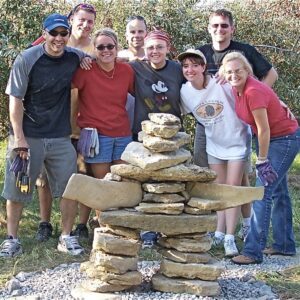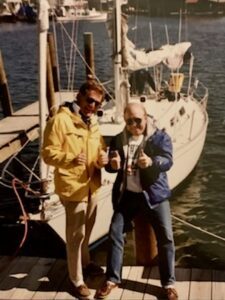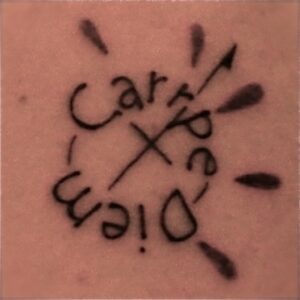Is It Hard To Be A Liberal in Today’s World?
It is tough to be liberal in today’s world.
I’ve been called a socialist for believing we need social safety nets for people with low incomes, the mentally ill, and the “least of us.” I believe in equity over equality.
I’ve been called a socialist for belief in Ubuntu – I am because we are. I believe in “we over me.” I believe in “community over individualism“.
I’ve been called a socialist because of my views on capitalism. I have spoken out about Wall Street buying up healthcare. The focus is on making money, not patient care. I’m seeing and experiencing this here in Asheville with HCA buying Mission Hospital. Healthcare should be a right, not a privilege. The average cost of U.S. healthcare was $12,555/person in 2022. The next highest nation in the world was Germany at $6,651 (Data from Health System Tracker). Did you know the number one driver of GoFundMe accounts is to help pay for healthcare bills? (The Atlantic) Did you know that healthcare bills are the number one reason for bankruptcy in America? (bankruptcyresources.org)
This socialist label is used on me when I point out that CEOs received 344 as much as the typical worker in 2022 (compared to 25 times the typical worker in 1965.) This disparity has led to the exploitation of workers and inequality. Capitalism has reached a point of diminishing returns for the 73% of our population (Gallup).
Recently, WNC grocery store Ingles CEO James Canning got a 31% raise to $3.3 million. The median Ingel employee salary is $22,708 (U.S. Securities and Exchange Commission, January 2024). His salary is 150 times greater than the median income of an Ingel employee.
Starbucks made $24.6 billion in profit in 2023. It could have given each of its 400,000 employees a $11,000 raise instead of relying on tips to earn a living wage and still had $20 billion in profit. (U.S. Securities and Exchange Commission, January 2024)
I repeatedly hear that the President is responsible for the economy and inflation. Check out the April 2023 Big Think, 5 reasons the President has little control over the economy.
The three main drivers of inflation we are experiencing are food, housing, and transportation. (IMF CPI database)
46 food companies made a combined $70 billion in windfall profits – 39 (85%) had increased their margin. They also paid $82 billion to wealthy shareholders in 2022.
49 energy corporations made $237 billion in windfall profits in 2022 and paid $157 billion to wealthy shareholders – 35 of these 49 companies (71%) increased their profit margins.
Shipping companies had a $150 billion year, which economists warn is stoking inflation. (Bloomberg)
53.9% of price growth could be attributed to increased profit margins, while labor costs were less than 8%. Corporations benefitted from inflation, and their excess profits are fueling it. (Economic Policy Institute report, April 2022.)
I get called a socialist when I suggest we move to Social democracy, which is based upon compassionate capitalism and uses capitalism to employ people receiving a living wage. What drives the U.S. version of capitalism is “greedflation,” and the law of scarcity, as excess is never enough.
A 90% tax on the windfall profits of the 1,000 largest companies worldwide could generate over $1 trillion. This would help reduce inequality. Most company profits go directly to shareholders who overwhelmingly sit in the wealthiest 1%; for example, the richest 1% own 54% of the shares held by U.S. households.
I’ve been called “woke” in my diversity, equity, and inclusion work, especially around my interests in reparations. I have been asked, “Why can’t you stay in your lane?”
My June 2020 blog, I Am A Racist, led to comments from readers, “Your parents would feel disrespected. They didn’t raise you like that.” “What have you been smoking?” “Black Lives Matter has brainwashed you. I thought you were stronger than that.”
At Montreat College, a cohort saw me entering the Black Mountain Unitarian Fellowship one Sunday to be the keynote speaker. My cohort told me that was where Satan resided and suggested I perhaps I was not a good fit to be at Montreat.
I’ve been labeled as “one of those” for my love and support of our gay daughter, her wife, and the LGBTQ+ community.
Because I believe no government entity, including courts, or men has the right to tell a woman what she can and cannot do with her body, I have been called a Planned Parenthood stooge and will end up in hell.
I’ve been called unAmerican and not supporting the 2nd amendment in my concern for the nearly 500 million guns in the hands of 336 million U.S. citizens. That is 120 guns per 100 citizens. The following highest gun-to-citizen ratio is in the Falkland Islands, with 62 guns per 100 citizens. Germany has 19 guns per 100 citizens, and Russia has 12 guns per 100 citizens. (https://worldpopulationreview.com/country-rankings/gun-ownership-by-country). The United States averaged 118 deaths per day in 2023 due to gun violence. (gunviolencearchive.org/) Guns are the leading cause of death in children under the age of 18. (CDC) Over half of the suicides in the U.S. are due to guns. (Pew Research)
Here is the bottom line for me as a Christian: the Jesus Christ I know, follow, and believe in was liberal. He was inclusive, not exclusive. Jesus hung out with the least of us. He told the wealthy a camel could go through the eye of a needle more straightforwardly than for them to enter the Kingdom of God. The Beatitudes weren’t just a sermon but a lifestyle that Jesus lived. Living the Beatitudes are a source of joy. Christ showed love is the opposite of fear. Consequently, Jesus Christ is having a tough time in today’s world.
Comments on this post from readers:
Ah, Dave, this was a great post. I especially appreciate your use of facts and figures. B.R.
Thank you for writing this and sharing it with me. It’s brilliant. You inspire me. J.S.
Very thoughtful stuff. I like the twist—equity instead of equality. Nicely stated. And, of course, painstakingly researched. Thanks for sharing. J.H.
Well written Dave… I’d call you enlightened and your parents would be proud too! G.J.
I would start with ” It is tough to be in this world today”. I would follow that having labels conservative, liberal are divisive. Everything has gotten so sensitive – gender, political, ethnic etc. J.C.
Beautifully written, not surprisingly. C.R.
I have been called a baby killer! I miss the dignity of what was the Republican Party. The policy ideas were different between conservatives and liberals but there was typically integrity and intellect associated with both sides. Now it’s, how low can you go! S.P.
Amen, brother! I’ve been called similar things. I don’t understand why people can’t get social democracy and feel the need to call it socialism. The Bible doesn’t speak for anyoneism unbridled. It is so frustrating when Christianity and unbridled capitalism is seen as one. D.B.
This is simply brilliant. I thank you for sharing this with me. For taking the time to analyze in a way that I have either not the patience or ability to delineate the way you did/do. I appreciate this so much. I appreciate you. I have called myself a socialistic democrat for several years now. As I have grown older, I have experienced all my life mythology revealed, and sometimes it is simply hard to know what to believe. Thank you for your truth and character. Glad to know you. C.W
Dave, this is wonderful writing. I love that you were able to footnote every item on your list. How to get this out to people who are not “part of the choir”? L.M.
Thank you, David, for including me in your distribution list. As always, I learn so much from reading your discussions on today’s world. Your parents would be proud of you, as I am sure you know. Obviously, whomever made that statement about your parents did not really know them well enough. C.W.











